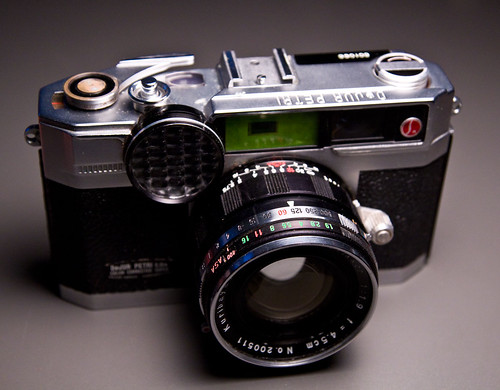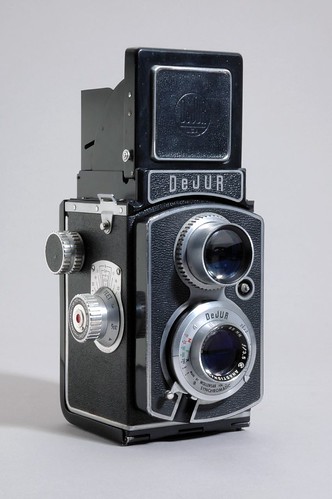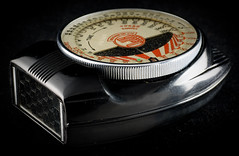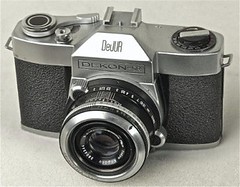Difference between revisions of "DeJur"
m (+ CP pool to Dekon image) |
m (adding a CP pool to last image) |
||
| Line 48: | Line 48: | ||
<div class="floatright plainlinks" style="margin:0px 0px 0px 15px;"> | <div class="floatright plainlinks" style="margin:0px 0px 0px 15px;"> | ||
{{Flickr_image | {{Flickr_image | ||
| − | |image_source= http://www.flickr.com/photos/verelse/4384603237/ | + | |image_source= http://www.flickr.com/photos/verelse/4384603237/in/pool-camerapedia |
|image= http://farm5.static.flickr.com/4008/4384603237_56f55c1784.jpg | |image= http://farm5.static.flickr.com/4008/4384603237_56f55c1784.jpg | ||
|image_align= | |image_align= | ||
Revision as of 22:42, 21 October 2011

|
| Advertisement for the DeJur-Amsco 'Autocritic' meter, in Popular Photography, June 1946. scan courtesy Voxphoto (Image rights) |
The DeJUR Amsco Corporation of Shelton, Connecticut, and later New York, was founded in the 1920s by Ralph and Harry DeJur.[1][2] The company traded in photographic goods, and apparently made some of their own. Later, DeJur also sold office equipment including copiers and dictation recorders. The company was eventually sold in 1974, when Ralph DeJur retired.
The company was well-known for cine equipment, and also sold enlargers and exposure meters. These meters were certainly made in the USA, and it seems that DeJur made at least some of them, or designed them and had them made.[3] DeJur-Amsco also imported cameras for sale under its own brand, from companies including Neidig and Tōkyō Kōgaku (Topcon). The Petri camera shown below still bears the Petri name prominently, however (it may be that Petri themselves refused to have the camera completely rebranded; Petri had a US distributing company of their own at this time, so DeJur would not have had exclusive access to the product).
|
| ||||
|

|
| DeJur-branded Petri E.Bn, 1960. image by Anthony Rabun (Image rights) |
Cameras
- DeJur D-1 (1955) Made by Neidig in Germany as the Perlux II.
- DeJur D-3 (1957) Made by Neidig as the Perlux IIa.
- Dejur Reflex DR-10
- Dejur Reflex DR-20
- Dekon-SR (aka Topcon PRII)
- DeJUR Petri E.Bn (1960)
Notes
- ↑ The DeJUR-Amsco page at Exposuremeters.net.
- ↑ There is a theatre named the Harry DeJur Playhouse in New York.
- ↑ James Ollinger, discussing the Model 50 Autocritic in his Exposure Meter Collection suggests this model may have been made by Hickok, on the basis of similar styling to Hickok's own products. However, this record of a Federal Appeal Court decision in the Federal Reporter for 1956 shows that the company employed a Chief Engineer (Marlin Fogle), and was in dispute with him over the rights to an invention (an automatic, dual-range exposure meter) which had been patented in his name in 1952, while working for DeJur-Amsco; clearly, at least some of the exposure meters were true DeJur products.


